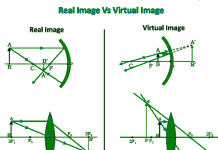Many students find it hard to understand the major differences between weathering and erosion. Both the terms are related to geological processes and seem the same, but when analyzing properly, you will find huge differences among them.
IN this post, we are going to uncover the primary dissimilarity between weathering and erosion.
The primary distinction between enduring and disintegration is that enduring is a drawn-out measure, yet disintegration is a transient cycle.

Weathering: A Quick Introduction
Enduring is the geographical cycle of separating assets, for example, rocks and minerals, because of the contact with the climate, water, or natural organic entities. The interaction incorporates the breakdown of rocks, soil, minerals, and other counterfeit material on Earth’s surface. In contrast to disintegration, enduring is an in situ measure; this implies, it happens at a similar spot where the source lies, and there is no development.
There are two sorts of enduring as substance enduring and physical enduring. Some of the time, these cycles may incorporate organic parts, too, e.g., microorganisms. In the enduring physical cycle, the breakdown of rocks and soil happens because of the immediate contact with mechanical conditions like warmth, water, ice, and pressing factors. Direct environmental synthetics or natural parts bring about compound enduring. Actual enduring, for the most part, happens in freezing or dry regions. Conversely, compound enduring happens in wet and hot regions. After the end of an enduring cycle, the extras consolidate with nature to make a difference in frame soil.
Erosion: A Quick Review what is the difference between weathering and erosion
Disintegration is a topographical cycle that includes the transportation of geographical sources starting with one spot then onto the next because of surface cycles, for example, water streams. Not at all like enduring, disintegration includes the development of sources, for example, soil starting with one spot then onto the next, and predisposition on another area. Foundations for disintegration incorporate unique exercises of erosive specialists like water, ice, snow, air, plants, creatures, and individuals.
Various kinds of disintegration are contingent upon the causative specialist—for instance, water disintegration, wind disintegration, snow disintegration, zoogenic disintegration, and anthropogenic disintegration. The pace of regular disintegration predominantly relies upon the precipitation, bedrock wear in waterways, ocean waves, and so forth. Regularly, the disintegration rate is higher at steep scenes.
For the most part, disintegration happens as a characteristic interaction, yet here and there, it is fake; for example, human exercises. Counterfeit disintegration is more noteworthy than normal disintegration, and it’s anything but a more prominent effect.
A brief description of both terms will be helpful for an individual to determine the difference between weathering and erosion. You can make notes by going through all the accurate information aforementioned without any hesitation.
Read Also: Difference between rat and mouse








yandanxvurulmus.F6QRfMfE5j20
7qj37t